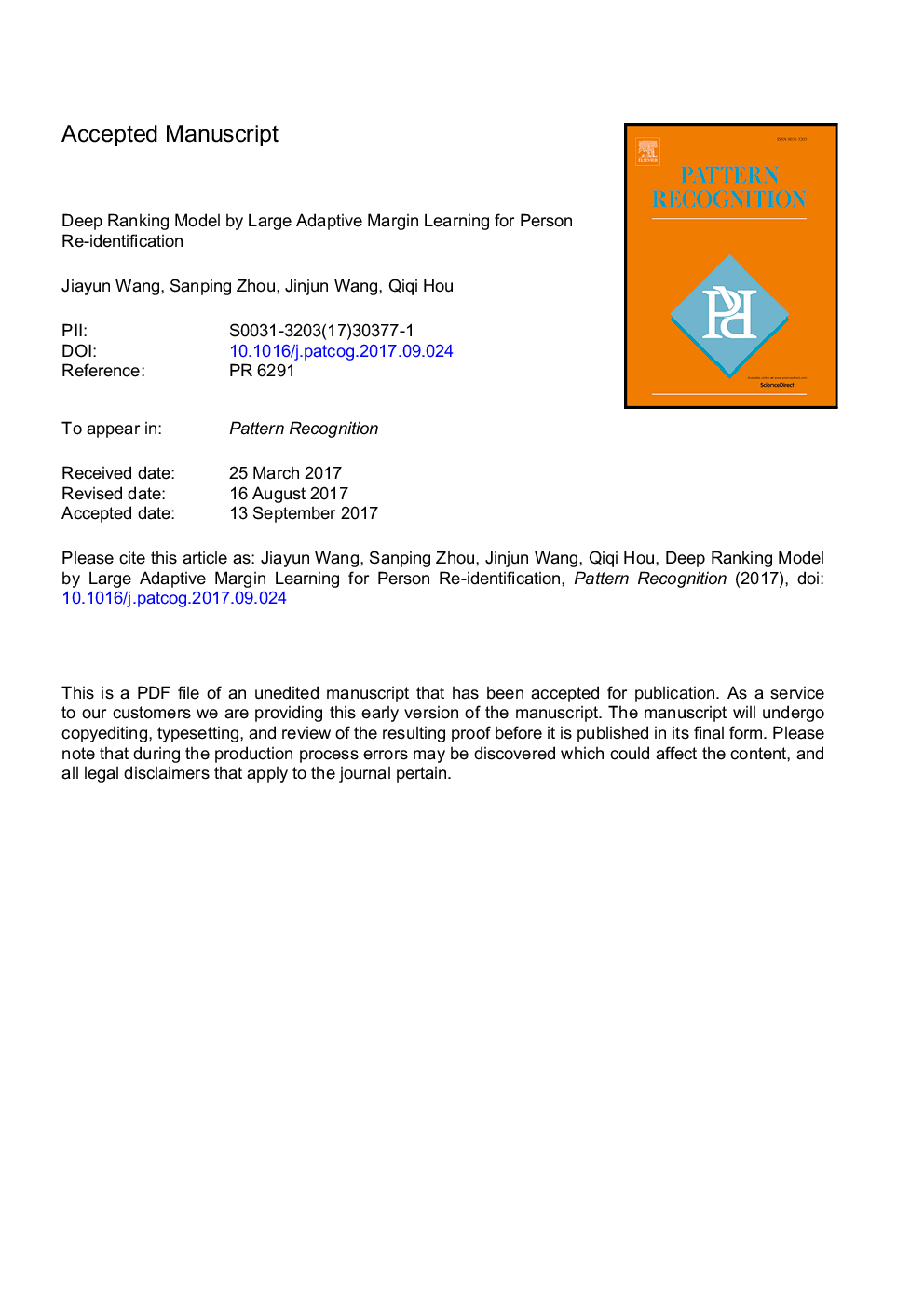| Article ID | Journal | Published Year | Pages | File Type |
|---|---|---|---|---|
| 6939720 | Pattern Recognition | 2018 | 33 Pages |
Abstract
Person re-identification aims to match images of the same person across disjoint camera views, which is a challenging problem in video surveillance. The major challenge of this task lies in how to preserve the similarity of the same person against large variations caused by complex backgrounds, mutual occlusions and different illuminations, while discriminating the different individuals. In this paper, we present a novel deep ranking model with feature learning and fusion by learning a large adaptive margin between the intra-class distance and inter-class distance to solve the person re-identification problem. Specifically, we organize the training images into a batch of pairwise samples. Treating these pairwise samples as inputs, we build a novel part-based deep convolutional neural network (CNN) to learn the layered feature representations by preserving a large adaptive margin. As a result, the final learned model can effectively find out the matched target to the anchor image among a number of candidates in the gallery image set by learning discriminative and stable feature representations. Overcoming the weaknesses of conventional fixed-margin loss functions, our adaptive margin loss function is more appropriate for the dynamic feature space. On four benchmark datasets, PRID2011, Market1501, CUHK01 and 3DPeS, we extensively conduct comparative evaluations to demonstrate the advantages of the proposed method over the state-of-the-art approaches in person re-identification.
Related Topics
Physical Sciences and Engineering
Computer Science
Computer Vision and Pattern Recognition
Authors
Jiayun Wang, Sanping Zhou, Jinjun Wang, Qiqi Hou,
